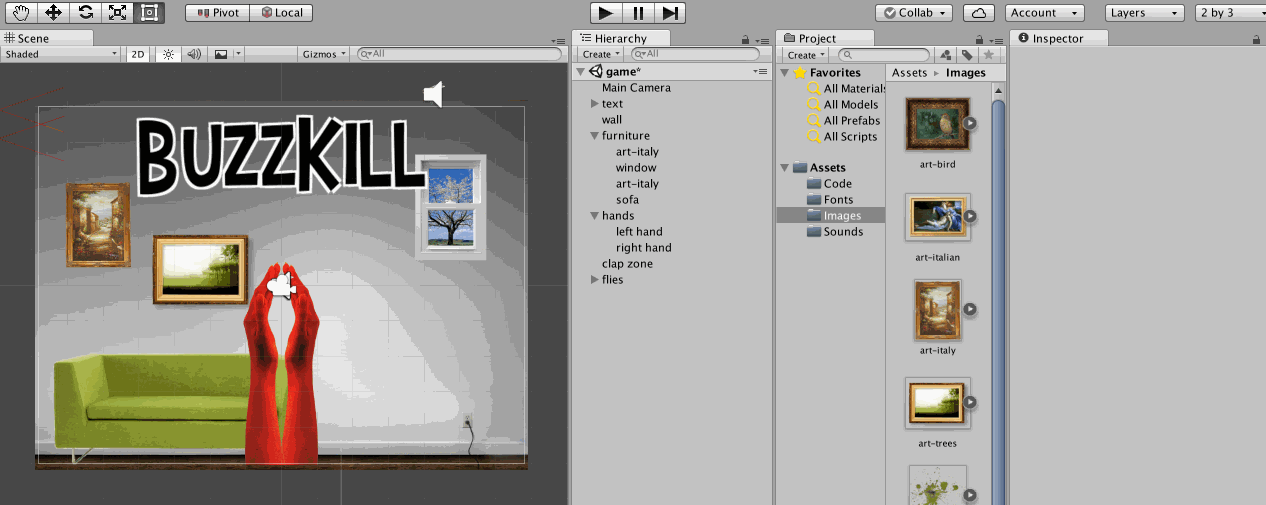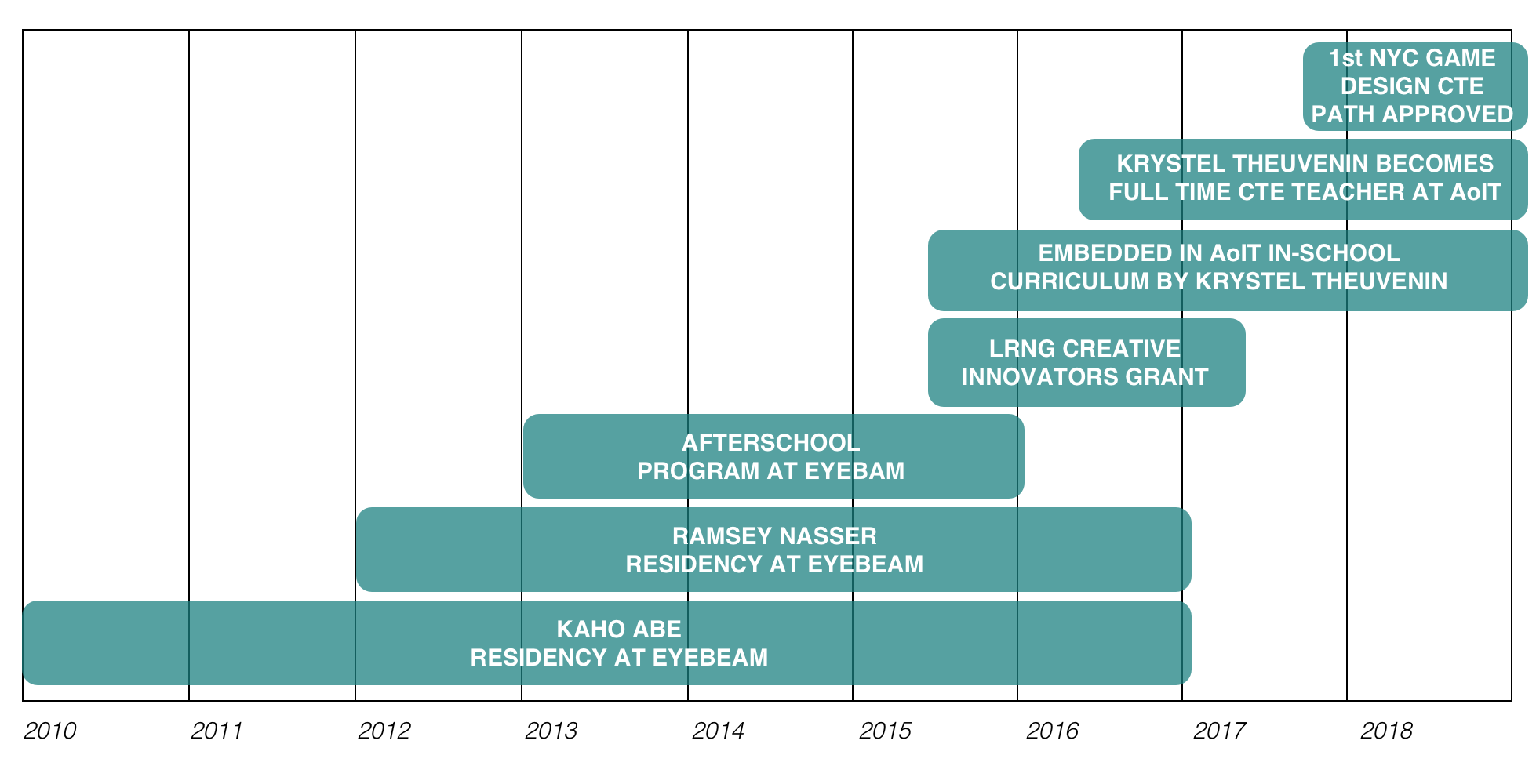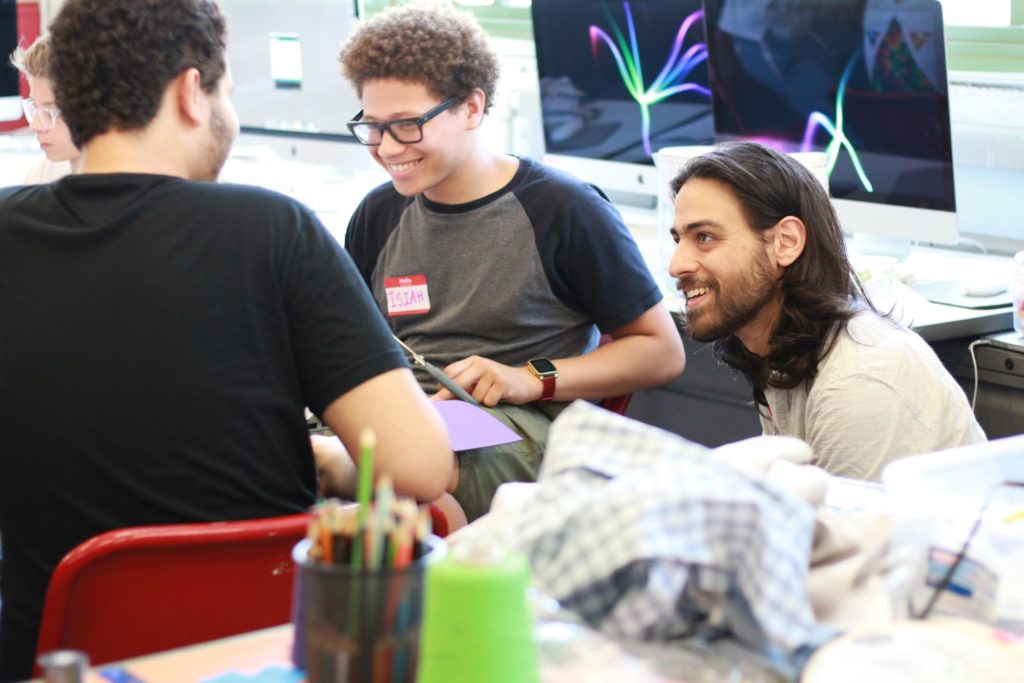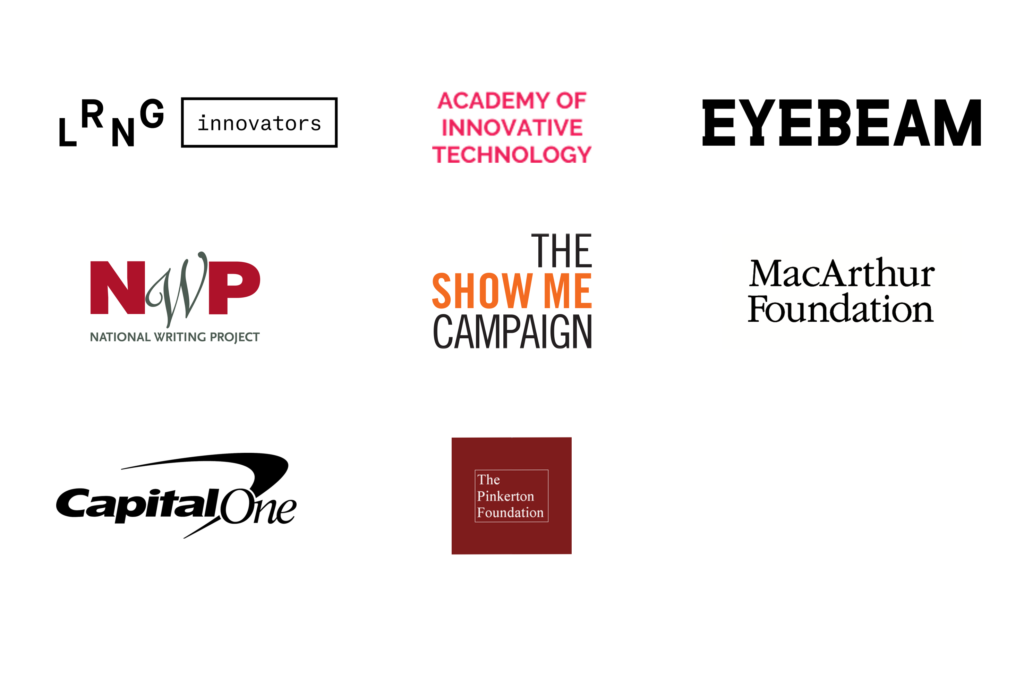Advocacy for Game Design: Classes that Keep Student Interest
Curators notes:
Playable Fashion is a program which works with youth who are usually passive users of game technology, to engage them in active, creative and critical practices. This after-school program was created at Eyebeam, is now delivered in-school at the Academy of Innovative Technology (AoIT), and has led to the approval of the first ever Game Design CTE Pathway in NYC.Summary:
Playable Fashion at the Academy of Innovative Technology in NYC provides tools to teach students game design, technology, and fashion to engage students in active, creative and critical practices that integrate technology with real life. Included are resource links, program development tips, and student feedback.“Encouraging youth to transition from consumers to producers”
– Kaho Abe, Eyebeam Resident 2010 – 2017, Playable Fashion co-creator, game designer, media artist, and educator.
LRNG Innovators Brightspots: Brooklyn video from LRNG on Vimeo.
Playable Fashion is a program which works with youth who are usually passive users of game technology, to engage them in active, creative and critical practices. This after-school program was created at Eyebeam, is now delivered in-school at the Academy of Innovative Technology (AoIT), and has led to the approval of the first ever Game Design CTE Pathway in NYC.
 GIF of BuzzKill developed in Unity3D
GIF of BuzzKill developed in Unity3D
Wait, what exactly is Playable Fashion? This is a unique program that provides tools to teach students game design, technology, and fashion. In its current iteration, the program starts with basic concepts of game design, where students are taught how to use the game engine Unity3D to program a fly-swatting game called BuzzKill. With this one-button game completed, students begin to work with the sewable microcontroller Flora by Adafruit Industries. Students learn how to make circuits using alligator clips and program the Flora to respond as needed for the version of the BuzzKill game they created. Finally, fashion is integrated into the project: students are given an introductory workshop to sewing and, using conductive thread, fabric, and tape, make a custom glove with an embroidery hoop containing the sewn Flora circuit.
How long did this actually take you? Eyebeam alums Kaho Abe and Ramsey Nasser developed these innovative tools for gameplay during their residencies at Eyebeam from 2010-17.
 Timeline showcasing the several stages of iteration for Playable Fashion.
Timeline showcasing the several stages of iteration for Playable Fashion.
They have since expanded this bleeding-edge research into a playful, easy-to-implement curriculum. The transition from an out of school (or after-school) program to in-school program to took 5 years. This has included funding from the Pinkerton Foundation for the initial workshops, Capital One to open up more module classes, and the LRNG Innovators Challenge Grant to start building resources for sustainability and teacher learning. For this final resource development, Kaho Abe and Ramsey Nasser ran professional development sessions with Krystel Theuvenin, current Game Design teacher at AoIT. During these sessions a major focus became the feasibility of the program: How does an after-school program that runs for several hours a week look in five, 50-minute class periods? First, New York City Department of Education standards for Career and Technical Education (CTE) were aligned to the topics. Second, the modules were reworked into alternating lesson days and workshop days. After eight years of hardwork and dedication, Playable Fashion is now an in-school teen program exploring the intersection between fashion, technology and gaming.
 Students sewing a fabric button with a simple circuit.
Students sewing a fabric button with a simple circuit.
“The whole point isn’t fashion and technology… but really seamlessly trying to integrate technology and real life.”
– Iltimas Doha, Playable Fashion 2013 after-school program, then Eyebeam Student Resident 2014-2015 – Parson’s Design and Tech, and ongoing consultant for NYCDOE
What is the actual impact of this program? The visible impact is measured through the students who participated, teachers who created and taught programs, and the development of the program curriculum as a whole. It encouraged students to see pathways for continued learning and career development outside of the school environment, that are applicable to them right now. Stories from students like Garai Caruth, really show this impact:
“I needed some science credit so I went and did the Playable Fashion program, which completely changed my perspective, and by the middle of the program I was just thinking completely about the project I was doing. It more than just combining wearables and fashion, it really opened my eyes to social justice and the things that technology and art can do. It never really left my mind, even after I graduated the program… how can I put art and technology into this?”
– Garai Caruth, Playable Fashion 2014 after-school program, then Eyebeam Student Resident 2016-2017 – Arcadia University – Founder of nonprofit Come Find Help
With the implementation of the Playable Fashion curriculum at the AoIT, student attendance at school, and student retention in computer programs, increased. These students groups who had once been disinterested with technology were given an outlet that matched their way of consuming media. Seeing such a change in student thinking, Krystel Theuvenin realized the potential of such a program, and chose to become a full-time Career and Technical Education teacher. Still empowered by the increase of student engagement, Krystel used the success of Playable Fashion to provide proof for the New York State Education Department in the program approval process. As of May 2018, the Academy of Innovative Technology High School now has the first state approved Video Game Design CTE Pathway.
 Ramsey Nasser working alongside students at an after-school Playable Fashion workshop.
Ramsey Nasser working alongside students at an after-school Playable Fashion workshop.
“[Playable Fashion provides a] training ground to send students out in the world to do this with existing games, do this with consumer electronics, with culture, to understand you don’t have to take the world at face value.”
– Ramsey Nasser, Eyebeam Resident 2010 – 2016, Playable Fashion co-creator, computer scientist, game designer, and educator.
So what happens next? Writing this resource is the first step in disseminating this to more students and teachers. Below are the continued steps to make this a reality:
- Creating resources such as program curriculum and videos to guide this learning that can be implemented by teachers.
- Create accessibility supplementary resources to that will include content for ELLs, SPED and aimed at students in lower income communities and low resourced schools.
- Collect stories from past and current students and keep them in the program community.
- Provide advocacy tools for students and teachers to bring to their school boards, local councils, education boards and funders.
Interested in doing something with your students now? Take a look at books like “Understanding Media: The Extensions of Man” by Marshall McLuhan. Get familiar with Unity or Arduino on a smaller scale. Find a workshop or network of teachers already in the computer science sector. And of course reach out to us in the comments below.
_____
Written at the National Writing Retreat 2018, Albuquerque. Krystel Theuvenin and Joanna Gould
Eyebeam works to ensure artists become central in the invention and design of our shared future. We aim to do this by providing artists with the space, resources and community to foster collaborative projects with technology geared toward a more imaginative and just world. Eyebeam residencies comprise the organization’s most well-known and prestigious program, launching the careers of over 480 practitioners through its 20 year history.
The Academy of Innovative Technology High School (AoIT) provides a foundation and pathway on which students can build their academic successes and triumph over their challenges. Our innovation lies in exploring inventive ideas, perspectives, and strategies, incorporating technology into the learning process, and presenting opportunities for students to grow as lifelong learners and active citizens. As graduates, AoIT students will be open-minded, believe in taking risks, learn from their mistakes, and participate in shaping their intellectual behavior thereby realizing their own potential and responsibility for bringing change to their communities and to the global society.
LRNG Innovators‘ mission is to create support systems that empower teachers to redesign learning, making it more relevant to students today, and creating a flexible, optimized environment, paving the pathway to student success in the 21st century.


